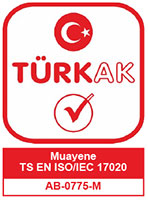Factory Production Certificate (EN 1090 Certificate)
EN 1090: Steel and Aluminum Construction Applications
1. What is EN 1090?
EN 1090 is a harmonized European standard that specifies the technical requirements for the manufacture and assembly of steel and aluminum structural components. The primary purpose of this standard is to ensure the affixing of the CE marking to structural products so they can circulate freely within the European Economic Area. The standard consists of three main parts:
• EN 1090-1: Conformity assessment requirements (mandatory part for CE marking).
• EN 1090-2: Technical rules for steel structures.
• EN 1090-3: Technical rules for aluminum structures.
🔧 Fundamental Principle: The standard requires that, before a structural product can be placed on the market, the manufacturer establish a system called Factory Production Control (FPC) and demonstrate that this system consistently delivers the declared performance.
📝 Scope:
• Execution Classes (EXC): Defines different manufacturing and inspection requirements based on the structure's risk level (EXC1 to EXC4).
• Factory Production Control (FPC): A documented quality system that controls every stage of production.
• Welding Quality: If welding is used, a system compliant with the EN ISO 3834 standard is mandatory.
• Declaration of Performance (DoP): The manufacturer declares the essential characteristics and performance of the product with a declaration.
• CE Marking: The CE marking is affixed to the product when all these conditions are met.
✅ 2. What are the Advantages?
Advantage Description
Legal Obligation and Market Access: This is a legal obligation for the sale of structural products in the EU market. The CE marking provides unhindered sales to all EU countries.
Competitive Advantage: This is a requirement in public and private sector tenders; it provides an advantage over companies without certification.
Proven Safety and Quality: It guarantees that the product is manufactured in accordance with international safety and performance standards.
Clear Responsibility Framework: It clearly defines the manufacturer's responsibilities and the product's performance declaration.
Brand Reputation: An internationally recognized standard increases company trust and brand value.
Export to Spreadsheets
🛠️ 3. What Competencies Does This Standard Provide?
Competence Description:
Right to Affix CE Marking: The legal ability to affix the CE marking to manufactured structural components is gained.
Approved Factory Production Control: It proves that all production processes are controlled within a system.
Defined Implementation Capacity: It is certified that the company can produce structures at the risk level (EXC1, EXC2, EXC3, EXC4).
Compliance with the Construction Products Regulation: The essential requirements of the Construction Products Regulation 305/2011/EU are met.
Competence in International Projects: The ability to be a supplier in global construction and infrastructure projects is gained.
Export to Spreadsheets
🏭 4. What is its Importance in the Industry?
EN 1090 is a cornerstone of the construction industry in Europe and many countries that reference European standards. It is illegal to market a structural steel or aluminum product without this certification.
• It is the primary guarantee of product safety for designers, contractors, and end users.
• It mandates quality and traceability throughout the entire supply chain (from the material manufacturer to the final assembler).
| Sector | Application Areas |
| Building and Construction | Factory buildings, warehouses, shopping malls, stadiums, and residential buildings. |
| Infrastructure Projects | Steel bridges, viaducts, pedestrian overpasses. |
| Energy and Industrial Facilities | Power plant structures, platforms, pipe and cable bridges. |
| Telecommunications and Broadcasting | Towers, masts, antenna support structures. |
| Special Structures | Agricultural structures, silos, crane ways, and exhibition hall constructions. |




